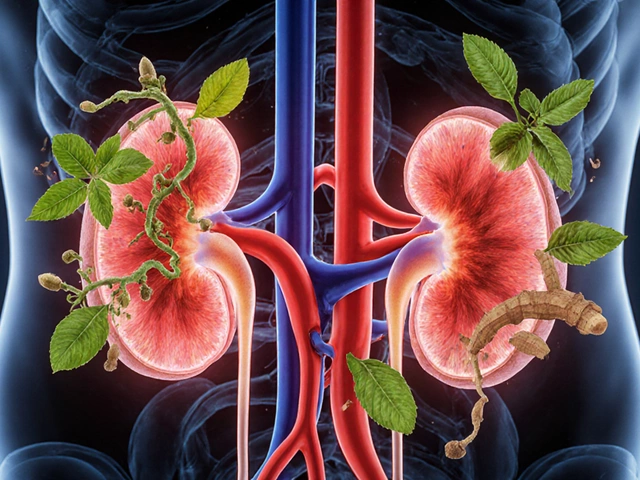
Stage 4 Cancer Treatment Assessment Tool
Assess Your Treatment Options
This tool helps evaluate chemotherapy suitability based on key medical factors. Results are for discussion with your oncology team only.
Your Medical Factors
Personalized Assessment
Treatment Suitability
Potential Benefits
Average survival extension with appropriate treatment
Side Effect Risk
Potential for manageable side effects
Alternative Options
Consider if mutation testing shows eligibility
Discussion Points for Your Oncologist
- Your suitability score:
- Recommended next step:
- Potential treatment duration:
- Clinical trial options:
Important Note
This tool provides a general assessment based on published medical guidelines. It is not a substitute for professional medical advice. Always discuss treatment decisions with your oncology team.
Quick Summary
- Stage IV cancer means the disease has spread beyond its original site, but chemo can still be useful.
- Decision to treat depends on tumor type, overall health, and personal goals.
- Chemo may extend life by months to years and can shrink tumours that cause pain.
- Side‑effects are real; modern drugs and supportive care reduce many of them.
- Alternatives such as targeted therapy, immunotherapy, or palliative care may be better for some patients.
Understanding Stage 4 Cancer
Stage IV cancer is the most advanced stage in the TNM staging system. It indicates that malignant cells have traveled (metastasized) to distant organs, often making local treatment difficult.
Common sites include lung, breast, colorectal, pancreatic and prostate cancers. The prognosis varies widely-some patients live several years, while others have a more limited outlook. The key is that the disease is still biologically active, which means treatment can still influence its course.
How Chemotherapy Works in Advanced Cancer
Chemotherapy uses cytotoxic drugs to kill rapidly dividing cells. In Stage IV disease the goal shifts from cure to control: shrinking tumours, slowing growth, and relieving symptoms.
Modern regimens combine several drugs to target cancer cells in different ways, improving response rates. For example, the FOLFOX regimen (5‑fluorouracil, leucovorin, oxaliplatin) is standard for metastatic colorectal cancer and can shrink liver metastases in roughly 30‑40 % of patients.

Factors That Influence the Chemo Decision at Stage 4
- Performance status - Measured by the ECOG scale, it reflects how well a patient can carry out daily activities. Patients with ECOG 0-1 often tolerate full‑dose chemo better.
- tumour biology - Some cancers (e.g., small‑cell lung cancer) are highly chemosensitive, while others (e.g., renal cell carcinoma) respond poorly.
- Goals of care - Is the aim to live longer, relieve pain, or maintain quality of life?
- Previous treatments - Prior exposure can limit options due to resistance or cumulative toxicity.
- Age and comorbidities - Kidney or heart disease may rule out certain drugs.
Potential Benefits: Extending Survival and Relieving Symptoms
When used appropriately, chemo can add meaningful time. In metastatic breast cancer, median overall survival improved from 18 to 24 months with modern combination regimens. In pancreatic cancer, gemcitabine plus nab‑paclitaxel adds about two extra months compared with gemcitabine alone, but that two months often come with better pain control.
Beyond numbers, shrinking a tumour pressing on a nerve or airway can dramatically improve quality of life. Many patients report feeling stronger, sleeping better, and regaining appetite once the tumour burden is reduced.
Risks and Side Effects
Common side‑effects include nausea, hair loss, fatigue, and lowered blood counts. Severe infections, neuropathy, or organ damage are less common but possible. Advances such as anti‑emetic combos (ondansetron + dexamethasone) and growth‑factor support (filgrastim) have made many side‑effects manageable.
It’s vital to discuss with the oncology team which side‑effects would be most troublesome based on your lifestyle. For example, a driver may prioritize avoiding severe neuropathy that could affect reflexes.

Alternatives and Complementary Options
Not every Stage IV patient will benefit most from chemo. Here’s a quick look at other treatments that might be considered:
| Option | Typical Goal | Response Rate (approx.) | Common Side‑effects | Administration |
|---|---|---|---|---|
| Chemotherapy | Control / palliation | 20‑40 % | Nausea, fatigue, neutropenia | IV or oral, cycles every 2‑3 weeks |
| Targeted Therapy | Control / prolongation | 10‑30 % (depends on mutation) | Rash, liver‑enzyme elevation | Oral pill or IV, continuous |
| Immunotherapy | Control / durable response | 15‑25 % (checkpoint inhibitors) | Immune‑related colitis, dermatitis | IV, every 2‑4 weeks |
| Palliative Care | Symptom relief | N/A | Medication side‑effects are minimal | Multidisciplinary team visits |
Clinical trials often combine these modalities, offering access to cutting‑edge drugs that may work better than standard chemo.
Making the Decision: Questions to Ask Your Oncologist
- What is my tumor’s specific subtype and does it have any targetable mutations?
- Based on my ECOG score, can I tolerate standard‑dose chemo, or would a reduced regimen be safer?
- What survival benefit can I realistically expect, and how does that compare to side‑effect burden?
- Are there clinical trials that fit my profile?
- How will treatment affect my daily life, work, and ability to care for family?
- What supportive‑care measures (nutrition, pain management, mental‑health support) will be in place?
Writing down answers helps turn abstract statistics into a personal plan. In many cases, a shared‑decision approach leads to a treatment path that aligns with the patient’s values.
Frequently Asked Questions
Is chemotherapy curative for stage 4 cancer?
No. At stage IV the disease is considered incurable, but chemo can slow growth, shrink tumours, and improve symptoms.
How long does a typical chemo cycle last?
Most cycles are given over 1‑3 days, followed by a rest period of 2‑3 weeks to allow recovery.
Can I stop chemo if side‑effects become too severe?
Yes. Treatment plans are flexible; your oncologist can adjust dose, switch drugs, or move to supportive‑care only.
What is the difference between chemo and targeted therapy?
Chemo attacks all rapidly dividing cells, while targeted therapy blocks a specific molecular pathway that the cancer relies on. Targeted drugs are usually effective only when the tumour carries a matching mutation.
Does receiving chemo affect eligibility for clinical trials?
Often trials require patients to be either chemo‑naïve or have completed a certain line of therapy. Your trial coordinator can clarify the criteria.
In short, stage 4 chemo isn’t automatically “too late.” Whether it’s the right choice depends on many personal and medical factors. Talk openly with your care team, weigh the numbers, and decide what aligns best with the life you want to live.





Rohan Talvani
I am a manufacturing expert with over 15 years of experience in streamlining production processes and enhancing operational efficiency. My work often takes me into the technical nitty-gritty of production, but I have a keen interest in writing about medicine in India—an intersection of tradition and modern practices that captivates me. I strive to incorporate innovative approaches in everything I do, whether in my professional role or as an author. My passion for writing about health topics stems from a strong belief in knowledge sharing and its potential to bring about positive changes.
view all postsWrite a comment